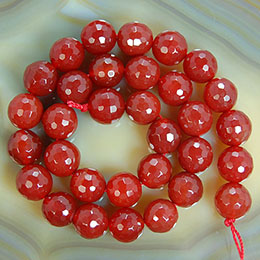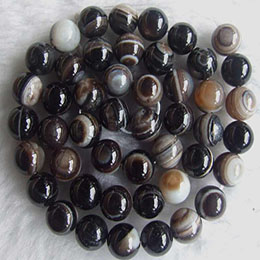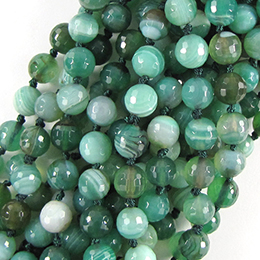The Gemstone Agate
Agate is a banded form of finely-grained, microcrystalline Quartz. The lovely color patterns and banding make this translucent gemstone very unique. Agates can have many distinctive styles and patterns, but each Agate is unique in its own habit, with no two Agates being the same.
Color White, Blue, Red, Green, Yellow, Orange, Brown, Pink, Purple, Gray, Black, Banded, Multicolored

ALL ABOUT
A generally accepted requirement in the definition of Agate is that it has to be banded. This qualification distinguishes it from other forms of Chalcedony which are not banded. Exceptions include Dendritic Agate and Moss Agate, which are not true Agates since they lack the banding patterns, but they are still traditionally called Agates since they have more than one color. Onyx, when banded white and black, is technically a form of Agate, and Sardonyx, which is a banded reddish and white Chalcedony, is also technically a type of Agate. Some forms of Carnelian may also exhibit banding and can therefore be classified as both Carnelian and Agate.
Deposits where Agates are commercially mined are usually very extensive, thereby enabling this gemstone to be affordable and inexpensive. However, a fine and sharp banded pattern, combined with natural strong coloring, will quickly increase the cost and value of and Agate. Specific Agate localities will provide similarities in banding style and color, thereby lending many Agates a geographic prefix. Other variety names used will connote specific colors or patterns, such as Fire Agate or Eye Agate.

The history of Agate production is closely tied to German town of Idar-Oberstein, which has evolved as an important gemstone center. Agates and Jasper were historically found in the Idar-Oberstein region, and cut and polished by local craftsman. With the discovery of the enormous Agate deposits in Rio Grande do Sul, Brazil in the 1800's, the new material was shipped to Idar-Oberstein for cutting and polishing. The local Agate cutters of Idar-Oberstein were well-suited for this job, having been historically trained in this profession. Idar-Oberstain remains today as an important cutting and polishing center.
USES
Agate is generally an inexpensive gemstone when used in jewelry. It is cut and polished into cabochons, and used as beads for necklaces and bracelets. It is also carved into cameos which can be worn as pendants. Agate makes an exquisite ornamental stone, and is cut into slabs, animal carvings, ornate book ends, and small statues and figures. Ornaments such as knife handles, pins, snuff boxes and the like are also cut from Agate.
VARIETIES
Agate has an over-abundance of variety names. Some variety names are generally used by collectors and dealers, but there are many made up by dealers to describe a locality or other habit. The varieties below are the well-known names or varieties that are commonly encountered. Seldom-used and localized trade names are not described here.

Agate TREATMENTS AND ENHANCEMENTS
Agates used as gemstones may be naturally colored, but they are often dyed. This is especially true of the Agates from Brazil that have more intense colors. Hot pink, blue, or green colors in Agate are always dyed.
Agate SOURCES
Agate deposits exist in Brazil, Argentina, Uruguay, Mexico, Poland, Botswana, India, Australia, and the United States (Oregon, Arizona, Montana, Wyoming, South Dakota, and Michigan).
SIMILAR GEMSTONES
The banding habit of Agate can distinguish it from most gemstones. Purple Fluorite known as Blue John may be banded, but it is much softer. The banded form of Calcite/Aragonite known as Travertine may also occur multicolored and be similar to Agate, but it too is much softer.

Comment (0)